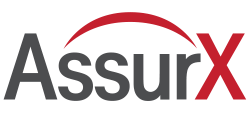January 13, 2022
Many companies are still clinging to paper-based and unconnected electronic processes. As a result, they are at risk of compromising product quality and compliance.
But there are other companies that are accelerating their technology adoption. IT spending throughout the world is expected to reach $5.1 trillion in 2024, according to Gartner, a technology research and consulting company. The figure represents an 8% increase in global IT spending from 2023. Investments are largely focused on core business applications (including the capability to perform remote work), cloud computing, and cyber security.
Life science and other regulated companies, as well as manufacturers, can no longer afford to operate using manual systems. They can barely keep pace with the changes brought about by digital disruptions. The stakes are too high to be caught unprepared when the next disruption arrives.
This is the first installment of a three-part series focusing on the importance of an electronic quality management system (EQMS) for regulated manufacturing companies. In this article, we’ll discuss the reasons why automation of quality processes is no longer a nice option to have but a necessity.
Facing a Two-fold Challenge
Regulated companies are unlike most businesses. They face a dual challenge unknown to their non-regulated counterparts: maintaining compliance on top of competing in a tough global market.
Complying with FDA, EMA, ISO, GMP, and other regulations and standards can be like going through an obstacle course. This is especially true for companies that still use manual processes. They may be able to jump the hurdles initially, but not for the long haul.
Also, as more and more regulated companies use EQMS, the FDA and other regulators increasingly expect automation in a QMS. In some cases, it is mandated. For example, medical device manufacturers must submit mandatory reports of adverse events electronically – known as eMDR – to the FDA. For pharmaceutical and biotech companies, the electronic common technical document (eCTD) is the standard for electronic submission to the FDA.
5 Reasons Why You Need an EQMS
To fully embrace automation of quality management, consider the following factors:
#1 Regulations point toward automation.
21 CFR Part 11, the watershed regulation that took effect in 1997, helped drive the movement toward automation among FDA-regulated companies. Part 11 doesn’t mandate automation, but it confirms the need for digitization to handle voluminous documentation during product development. Standards such as GAMP (Good Automated Manufacturing Process) encouraged automation by offering a practical framework to ensure that computer systems are compliant.
By specifying standards for audit trails, electronic records, and e-signatures, Part 11 signaled that there’s no turning back to paper-based processes. In the future, we can only expect more technology-facilitated standards and regulations.
#2 The new business paradigm compels EQMS automation.
Working remotely and collaborating virtually has become normal in many companies. Logically, the next step is to pursue optimization and build resilience through automation. When in-person audits are impossible, an EQMS can make virtual audits a viable alternative. Pharmaceutical companies are using remote engagement with patients and other virtual tools to minimize disruptions in clinical trials. For many manufacturers, cloud technology may be the key to bridging the distance between employees and their tasks.
#3 A fast-changing business environment requires real-time intelligence.
The pandemic has shown us just how quickly the business environment can change. Survival in fast times requires timely intelligence to help you adapt. In regulated industries, the ever-changing marketplace has led to Quality 4.0. It’s a new way for managing quality with the help of the latest digital tools. A manual system’s paper forms, phone calls, emails, and spreadsheets for collecting intelligence are woefully inadequate. Quality 4.0 calls for automation, the only way you can leverage integrated data and analytics for intelligence in real time.
#4 Outsourcing and global expansion of supplier network requires connectivity.
Under 21 CFR 820 and FDASIA (Food and Drug Administration Safety and Innovation Act), FDA-regulated companies are ultimately responsible for their suppliers’ compliance. Drug sponsors using contract research organizations (CROs) for clinical trials carry the compliance burden under 21 CFR 312 and ICH E6 GCP Guidance. For general manufacturers, ISO 9001 standards require supplier qualification and regular evaluation as part of quality management.
Lack of communication and poor collaboration are the biggest challenges for companies that use suppliers or outsource parts of their operations. You can overcome both problems if your enterprise quality management system is fully automated and connected with vendors, CROs, and other partners.
#5 A fiercely competitive global market requires a culture of quality.
It’s tough that regulators, auditors, and customers scrutinize the quality of your product and services. It’s tougher still when consumers disseminate their opinions about your product and services instantaneously through the internet and social media. In this sense, quality has never mattered more. Today, quality needs to be the responsibility of your entire organization, not just the quality team. Automation of all your processes can help you build an enterprise-wide culture that fosters quality. A closed-loop EQMS makes it easier for everyone to participate in quality processes and practice quality in all their tasks.
Conclusion
The responsibility to automate quality management is much greater today. Out of necessity, companies are learning that to compete in the current business environment and comply with regulations better, they need greater levels of digitization in their operations, beginning with an end-to-end EQMS.
Related Reading: Prioritize QMS Process Automation or Risk Failure
About the Author
Sal Lucido is Co-Founder and Executive Vice President AssurX. Sal is an unequivocal product evangelist and an expert in the area of quality process automation. He holds a broad array of responsibilities, ranging from overseeing strategic plans and operational improvements to managing tactical alliances.


